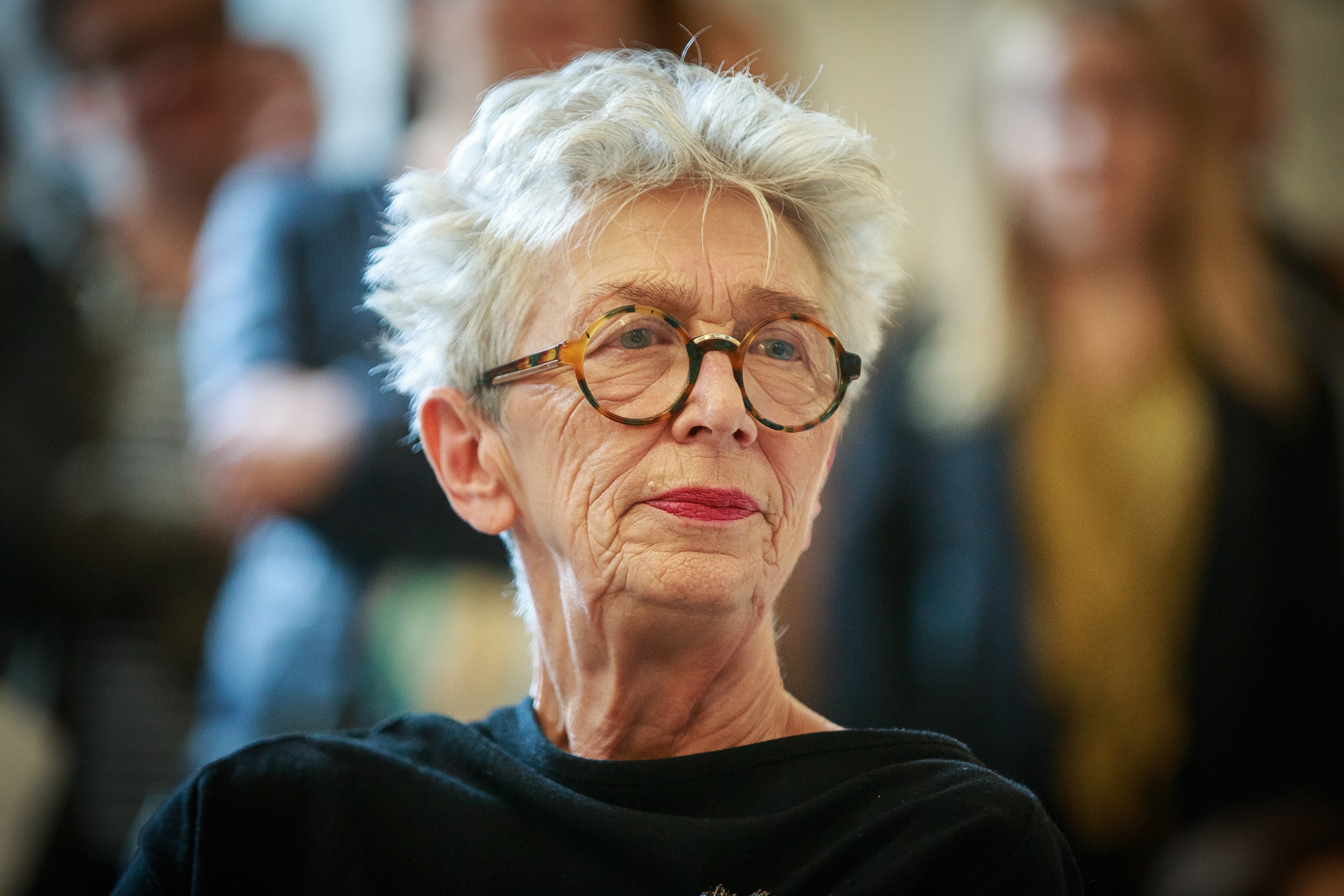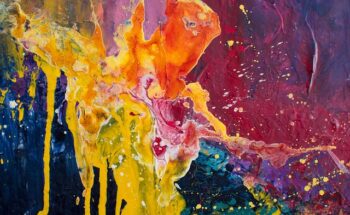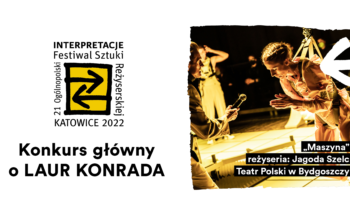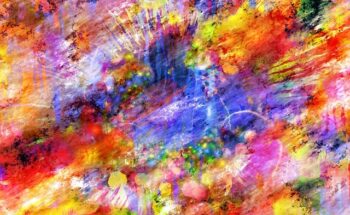
fot. Michal Wozniak/East News Warszawa 26.06.2018 Spotkanie z Anda Rottenberg n/z: Anda Rottenberg
Curator, art historian and art critic, as well as a member of the jury of this year’s festival “Interpretations”, Anda Rottenberg writes in her essay about the work of curator of exhibitions, comparing it to the work of the director. The text will also appear in the catalog for the festival. We invite you to read.
The Curator as Director [Curator: A Non-Existent Profession]
In the traditional terminology referring to the hierarchical structure of a museum, curators are the formal heads of the various divisions of the institution’s permanent exhibition, for example the medieval or the early modern division, though there are also curators who are responsible for collections subdivided by category, such as sculpture, painting, or oriental art. In the final quarter of the twentieth century the term curator also came to be used to describe the profession of someone who creates exhibitions. The extension of the semantic range of this term was connected with the changing definition of the exhibition and referred primarily to the manner in which contemporary art was presented. It is generally accepted that a decisive role in this respect was played by the Documenta 5 exhibition in Kassel, prepared by Harald Szeemann in 1972. Since then, exhibitions have ceased to be merely presentations of artworks, and have become a discourse whose participants are objects (of often diverse provenance), actions, and attitudes. It was in this spirit that the term exhibition was defined by the École Nationale Supérieure des Beaux-Arts de Lyon:
The exhibition is a discourse, a mode of construction and dissemination of knowledge. It is also a physical space, that has to be built, organized, designed – a space in which paths of specific temporalities, meetings and experiences must be imagined.[1]
In this context, the person preparing the exhibition, i.e. its de facto author, had to broaden the scope of his or her engagement to include worldview, intellectual endeavour, and pure design. Over time, the range of skills required of the exhibition curator led to further professional specialization. The word kurator entered the Polish language (and Polish artistic life) as a localized borrowing from English (exhibition curator). However, given that today ‘curator’ is a profession in most parts of the world, it has become necessary to change the designations of various functions involved in staging major artistic manifestations. Nowadays, these are described using terms borrowed from the theatre and film industries: a new description has emerged by analogy with such terms as film director or stage director – the art director. In cursory translation into Polish the latter is often rendered as dyrektor artystyczny (dyrektor connoting primarily managerial functions in this language), but in the English original the ‘director’ part of the designation is rather germane to its theatrical and cinematic meaning (Pol. reżyser, cf. German Regisseur). One of the reasons for this is that an exhibition is increasingly becoming a spectacle, in which an important role is played by activities unfolding in time, accompanied by moving images and sound. The term curator has in turn become so popular that it is often used in reference to activities unrelated to exhibitions. The word crops up wherever skills such as formulating ideas, explicating concepts and conceptions, and selecting participants are required, so it can be applicable, for example, to a scientific conference. But there are also references to the curator/archivist or curator/librarian in cases where the desired skill is that of interpreting an assembly of items, such as a collection.
The exhibition as an integral work of art
Going back to the concepts related to exhibitions and their creators, it is important to point out that, despite the passage of the years and the firm establishment of the curatorial profession throughout the world, there is still a considerable amount of confusion with regard to its definition. The most popular encyclopedia in the world today, Wikipedia, continues to point primarily to the museum function of the curator’s work, often enumerating highly diverse jobs that he or she is supposed to do, which largely relate to his or her functions, or specific positions, and consequently reflect relevant ‘job descriptions’. In some cases additional mention is made of the existence of something called free curator or art curator as distinct from the museum curator, though without any indication of the most essential differences between these categories, namely that one is an occasional function and the other a profession – although the two are indeed often combined in museum practice. In the context outlined above, it is quite interesting that the Polish definition places emphasis on identifying the characteristics of the new profession, to the exclusion of the museum functions:
Exhibition curator (Kurator wystaw), an art-related profession which originated in the 20th century. A curator is a person professionally involved in organizing exhibitions (not only of art) as concepts, intellectual wholes. Just as in art criticism, distinctions can also be made between various aspects or types of curatorship, e.g. companion curatorship, focusing on the works of often just one artist, or creative curatorship, which consists in ‘using’ artists’ works to achieve a specific effect, illustrate a thesis, or construct an intellectual whole.[2]
There is, however, no definition of an art exhibition in the Polish Wikipedia, though it does provide a definition of exhibition design:
Exhibition design (Wystawiennictwo), the architecture of exhibitions, a term from the domain of interior design and visual arts which designates the art of displaying (exhibiting) works of art, objects, products, documents, phenomena, and ideas. The exhibition designer/artist directs (reżyseruje) the presence of viewers within the exhibition space, guides them, constructs the narrative, creates a situation of special contact between the public and the presented values; gives additional meaning to, orders, explains, comments on, and sanctifies [the exhibits]; provokes interpretation and lively reception; uses visual means, such as light, colour, plane, background, three-dimensional elements, photography, film, sound, multimedia, and the arrangement of the exhibits in space; works within the confines of the curator’s script or the inventory of available resources, under specific conditions and within the bounds of the technical possibilities.’[3]
This definition is rooted in the museum tradition of preparing exhibitions, where the classic curator, i.e. a museum specialist with expert knowledge in a selected area, e.g. Persian rugs or Chinese porcelain, would create a script, in most cases in the form of a catalogue-type listing of the exhibits selected for the exhibition, and the exhibition designer would arrange the space in which the works were to be displayed and decide how they would be exhibited. In Poland, the development of this field spawned a superb design school, with Stanisław Zamecznik as its most prominent master, who subordinated exhibition spaces to his vision and implemented his concept of the exhibition as an integral work of art in its own right. Zamecznik began to create such areas of organized imagination or (as Mieczysław Porębski postulated) ‘enclaves of organized information’[4] as early as 1946, with the famous Exhibition of the Recovered Territories in Wrocław.[5] His projects of historical significance include his collaboration with Wojciech Fangor on designing that painter’s exhibition at the Zachęta Gallery in Warsaw in 1958; the outcome of that collaboration, ‘A Study of Space’, was in fact an integral work of art, credited to both artists.
The traditional understanding of the exhibition designer’s role thus shifts onto him or her the burden of interpreting the whole exhibition. The extent to which the display of the exhibits imposes a particular interpretation of them was exemplified by two successive posthumous exhibitions of Andrzej Wróblewski’s work in 1958, with the same selection of objects in both cases. The design of the first, prepared by Andrzej Pawłowski at the Palace of Art in Krakow, was revolutionary: the paintings were hung at various heights, some were set on the floor leaning against the wall, surrounded ‘in the middle ground’ by sketches and gouaches, and confronted with either props ‘extracted’ from the pictures (chairs) or arranged situations (‘chairing’). The very same ‘material’ was organized into a completely different array at the Zachęta Gallery in Warsaw, where Stanisław Zamecznik placed most of the paintings and works on paper at the same (limited) height while ‘ungluing’ them from the walls and suspending them freely in space, thus creating a multi-planar mosaic of works that ‘talked to each other’.[6]
The curator and the exhibition designer
The worldwide tradition of dual allocation of roles in the preparation of exhibitions, where the curator (sometimes referred to as ‘commissioner’ in non-museum exhibitions of contemporary art) would compile lists of the objects or – in group exhibitions – simply lists of the participants, while the designer would select the works and decide where to situate them in the space that was to be arranged, is strongly ingrained in Polish artistic life. Most large shows have been the work of exhibition designers – suffice it to mention those referred to above, or other classic names from this genre: Jan Kosiński, Viola Damięcka, Witold Janowski, or Krzysztof Burnatowicz, who left a mark of their unique style on every show they created. It should be added here that the role of the exhibition designer remains very important today, sometimes even dominant, to the extent where he or she is the actual author of the exhibition. Cases in point include the Warsaw Rising Museum in Warsaw and Schindler’s Factory in Krakow. Such is also the nature of the permanent exhibition at the Museum of the History of Polish Jews.[7] Interestingly, despite their entirely different intended purposes, they are all similar in appearance, being the work of the same design practice. These are, however, museum exhibitions of a permanent nature, which usually require no curator; for example that at the Jewish Museum is under the general supervision of the Exhibition Director, who, however, is not responsible for its narrative.
The tradition described above was never followed very strictly in Poland. As already indicated, it was often omitted in exhibitions of contemporary art. The shift of authorial responsibility was a gradual process, initially relating to the organization of manifesto exhibitions. Both the 2nd (1957) and the 3rd (1959) Exhibitions of Modern Art (the latter closed immediately after its inauguration) were considered auteur exhibitions of Aleksander Wojciechowski, an art critic. The same is true of the ‘Metaphors’ show, prepared under the direction of Ryszard Stanisławski (Sopot, 1961).
These two, and also Mieczysław Porębski, Janusz Bogucki and Marek Rostworowski, who became known through their exhibitions held between 1960 and 1990, can easily be counted among the rising group of professional curators, though none of them would have used that term. What set them all apart from other ‘commissioners’ was the discursive idea underlying their initial concept of the show, which undermined existing convictions concerning not only the manner in which exhibitions should be put together but also – or possibly primarily – the manner in which the theme should be presented, which in most cases went beyond the limited scope of issues relating to art or aesthetics, and thus turned the exhibition into a forum for negotiation, often with the viewer’s participation.
The creation of the ‘prototype’ of the profession of curator in Poland was thus the achievement of a group of people who perceived their work in terms of a mission occasioned by a need to change the worldview or paradigm prevailing at a particular time. Irrespective of the area targeted for revolt, whether it was the axiology of art in a given socio-political situation (Aleksander Wojciechowski), historical tradition (Porębski), European tradition (Stanisławski), or intervention, through art, in the ideological standards of the day (Rostworowski, Bogucki), each of them showed an independence of views and implemented his own strategies. From this point of view, their exhibitions can be described as truly creative works, each of which had a specific auteur, irrespective of who was responsible for the layout of the objects within the exhibition space. If, then, we refer to the curator as the creator of the exhibition, we mean not the person who designed its architecture and devised the technical solutions but rather the one who decided on its character and meaning. The role of the designer, if any, was ancillary in these cases. In most of the examples cited here the curators themselves arranged the layouts of their exhibitions. Both Rostworowski and Bogucki certainly did. All the exhibitions of Polish art that Aleksander Wojciechowski prepared abroad were designed by himself, and the same is true for Stanisławski’s shows, except for those in Paris (‘Presences Polonaises’) and Bonn (‘Europa, Europa’). He invited Roman Cieślewicz to design the former, and used Stanislav Kolibal for the latter; in this way, each of them entered the exhibition area as yet another artist rather than the person who was to take decisions regarding the layout of the ‘exhibition material’.
The curator is not a creative artist?
Similar relations between curators and designers still operate today. Most exhibition creators organize the space, and design the layout and the decoration of the exhibition in the form of guidelines for the architects and technicians. Naturally, this type of purely ‘design-based’ thinking is never the goal per se; the aim is rather to create such a ‘layout’ of the artworks that would generate a desirable kind of tension between them, not just at the visual level, but above all in terms of meaning. In other words, the aim is to release the latent, often unexpected, potential of each work of art, i.e. to give it meanings that are entirely different from those traditionally ascribed to it. Proposing a new reading of a work of art based on the way it is exhibited is indeed another specialty of the curatorial profession.
However, the complexity and unique nature of curatorial work, and consequently the unique nature of this profession, remain insufficiently recognized. This is largely due to the misconceptions surrounding the definition of an exhibition. As mentioned before, the concept of exhibition is still directly associated with design activity. On the basis of thousands of examples of curatorial practice worldwide and the contexts of various definitions, we can observe that the encyclopedic entry for ‘Exhibition design’ quoted above, and in particular the sentence referring to the ‘exhibition designer/artist’, contains a description of all the characteristics prescribed for an exhibition by the Lyon definition (also quoted herein). In that entry, the curator is mentioned as the person providing the exhibition designer with a script. Here again we are dealing with concepts sourced from the domain of film, though the curator is featured here as the script writer and the designer as the director. It is indeed the case that the activities involved in preparing some exhibitions prompt comparisons with the process of making a film. In film production the rhythm of work is determined by the successive stages of the process. There is the initial phase: the idea, exposition of the concept, scene breakdown, and script; the preparatory phase: selection of the cinematographer, set designer, costume designer, and actors, preparation of the shooting script or storyboard, and documentation; the production and shooting phase, i.e. the time of active cooperation between all the participants engaged in making the film; and the final phase, involving editing, sound editing, and syncing, i.e. post-production. Similar stages can be identified in work on an exhibition. There is a concept phase here as well, with all the components identified above; a preparatory phase involving – in addition to writing the script and designing the exhibition – obtaining existing works of art or designing new objects; a production phase; and the ‘finale’ when the exhibition is given its final shape (even if it contains mutable elements). Both the film director and the exhibition curator use the talent and work of others. The director employs the abilities of the script writer, the cinematographer, the set designer, the costume designer, the actors, the composers, and even the editors, the lighting assistants, and his own personal assistants. All of these people have a creative part in the making of the work of art that is a film. The exhibition curator is the author of the script, in which he uses both existing works of art and non-artistic objects as well as works created to commission by visual artists, filmmakers, composers or performance artists, and furthermore the work of the designers of architectural and scenographic elements. Today it is the curator rather than the exhibition designer who directs the presence of the viewer within the exhibition space, defines its divisions, devises the narrative paths, builds up the mood and decides on the positioning of all the objects in a manner that will put them in ‘a state of dialogue’. Thus both the director and the curator aim to attain an intangible ‘added value’ that will make it possible to recognize the result of their effort as a coherent work of art. Consequently, both are creative artists, though only one of them – the film director – is entitled to this designation, not just in the eyes of the law and common opinion, but even in wide artistic circles. This approach seems to be grounded both in society’s lack of knowledge of the specific nature of the curator’s work and in the recently developed custom of interventions in the exhibition space undertaken by a wide range of individuals – whether it be the institution’s director, a censor, or a hooligan.
If one were to assume that a creative artist is one who creates a new intellectual and spiritual reality through activities in the visual, audio and even purely situational spheres, then the author of an exhibition fully deserves this designation, just as the resultant product of his activities deserves to be considered a work of art which should be protected by copyright. In most European countries any interference with the physical fabric of an exhibition is tried by courts as a violation of the integrity of a work of art. In Poland, under copyright law, violating the integrity of a creative work – whether it be a painting, a sculpture, a poem or a film – is subject to legal sanctions. An artist in whose painting someone has made holes is entitled to damages without the need for litigation: all that is required is an expert’s opinion. This applies to any work of art, except for an exhibition, even though a curator’s contract includes a clause regulating the sale of copyright in all of the work that he performs and provides. Even more interestingly, such a contract is usually drafted as an agreement to create a specific complete work, a predefined type of contract in Polish civil law. There is, then, some form of copyright that the curator is selling to the other party but in the light of the same law the result of his work is not considered a complete work, and thus he is not protected by law. The curator of an exhibition from which someone has removed or transferred an exhibit has – as do all citizens – the right to sue for the infringement of his personality rights. However, he is required to identify those rights himself and demonstrate what loss he has suffered as a result of their infringement. In practice, he has no chance of winning such a case, not just because the loss is unquantifiable in such matters but also because Polish courts will be helpless in such cases as long as the profession of curator is not included in the list of creative professions. As of now, it is not.
Anda Rottenberg, juror of the Interpretations Festival, art historian, critic, art curator, and writer. Between 1993 and 2001 Director of the Zachęta State Gallery of Art in Warsaw.
Reerences:
[1] Website of the École Nationale Supérieure des Beaux-Arts de Lyon, http://www.ensba-lyon.fr/ [accessed 17 February 2014].
[2] Wikipedia [accessed 3 August 2018].
[3] Wikipedia [accessed 3 August 2018]
[4] Porębski, ‘Enklawa zorganizowanej informacji’, Projekt, 1(58)/1964.
[5] Fudala, ‘Słuch przestrzenny Stanisława Zamecznika’, Muzeum, 3/2008 (Muzeum Sztuki Nowoczesnej w Warszawie).
[6] See: M. Ziółkowska, W. Grzybała, Avoiding Intermediary States. Andrzej Wróblewski 1927–1957, Warszawa, 2014.
[7] All these were designed by Mirosław Nizio.



